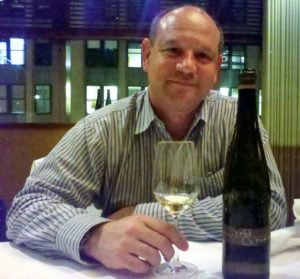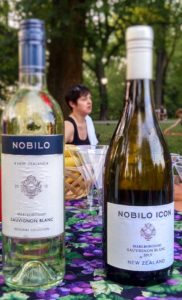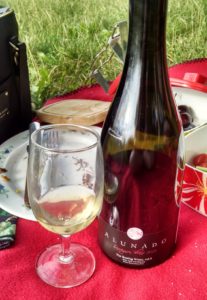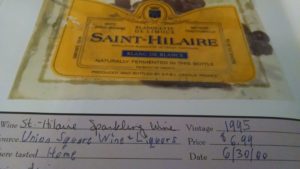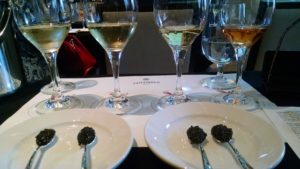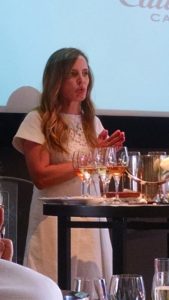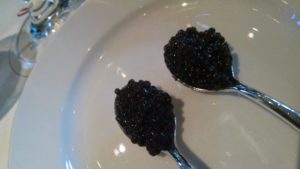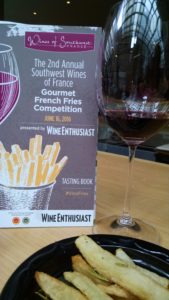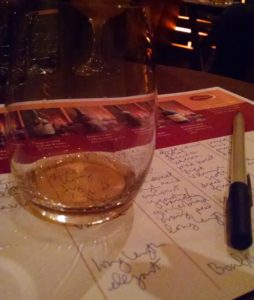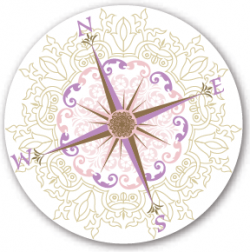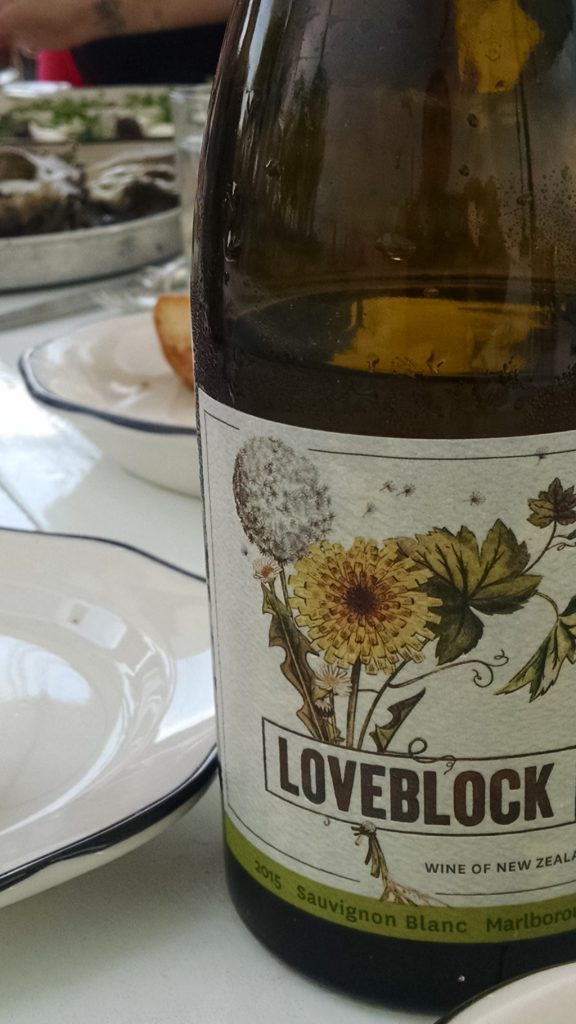Although the world of wine has a long and storied history, two recent events – dinner with Evripidis Katsaros of Domaine Katsaros and lunch with Andrea Marazia of Ricossa winery – underscored the ever-evolving nature of the industry.
Domaine Katsaros, modernity in ancient Greece
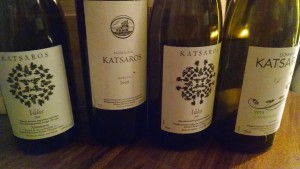 Thinking about Greece, images of the Acropolis and other ancient temples might spring to mind – crumbling pillars as a testament to a bygone civilization. But, despite this legacy of antiquity, there is a very modern bent to the winemaking currently taking place in Greece and Italy.
Thinking about Greece, images of the Acropolis and other ancient temples might spring to mind – crumbling pillars as a testament to a bygone civilization. But, despite this legacy of antiquity, there is a very modern bent to the winemaking currently taking place in Greece and Italy.
Instead of meeting Katsaros’ winemaker at a Greek establishment, the invitation promised pizza at Marta, the resident restaurant at the Martha Washington Hotel. Part of Danny Meyer’s empire (aka Union Square Hospitality Group), Marta is known for its wood-burning ovens, which turn out beautiful thin-crust pizzas and tempting grilled meats.
But, before the food was served, the journalists were given the opportunity to blind taste two wines and guess which one was the Katsaros 2015 Xinomavro barrel sample and which… was a Barolo. Like Nebbiolo — the grape responsible for Barolo (among others) — Xinomavro needs a lengthy time to fully ripen and has similarly high acidity and firm tannins. Evripidis further described Xinomavro wines as showing aromas of black fruit, rose petals, olive and tomato.
Interestingly, while the blind comparison didn’t seem to stump the participants, it did illustrate the shared characteristics of the two varieties. Yet, in the end, the Barolo’s significantly more tannic structure and less overt fruit aromas gave itself away. Meanwhile, despite its youth, the Xinomavro was rather enjoyable with its pronounced floral nose, brighter acidity and softer tannins.
For many of the guests, this was a first introduction to both Xinomavro and to Domaine Katsaros. The Domaine got its start in the early 1980s, when Evripidis’ father, Dr. Dimitrios Katsaros, purchased a small estate on the slopes of Mount Olympus. The property was initially intended as a family vacation home, but the area beckoned to him and soon he was buying additional land and planting grapevines on the 2500-foot elevation plots.
At the time, technical information on Greek grapes was non-existent, so Dimitrios looked to a grape with a proven track record: Cabernet Sauvignon. The Cabernet was followed by Merlot, which was originally intended solely as a blending partner for the estate blend. However, they quickly discovered that the grapes were of significant quality to be crafted into a single variety Merlot.
In the early days, Dimitrios made wine only for friends and family, but, by 1985, the winery became official, coinciding with Evripidis’ childhood and adolescence. Having spent his summers watching his father build up the estate, it was a natural fit for him to study bio-chemistry at Bordeaux University, followed by a degree in Viticulture and Oenology from Burgundy University.
Consequently, Evripidis knows his way around French grapes and his contribution in this regard has been the addition of Chardonnay, thanks to his belief that they would get good results from this variety. While many areas of Greece would be too hot for a grape that thrives in Burgundy’s cool climate, the northerly position of Domaine Katsaros’ provides a suitable home with a latitude and weather akin to that of Tuscany. In true French fashion, the Chardonnay is aged in French oak for several months, although Evripidis, who took over as head winemaker in 2008, admits that he prefers less wood than his father, especially in white wines.
However, despite the heavy reliance on French varieties, a subtle shift seems to be taking place, with a new interest in indigenous grapes, as evidenced by the planting of Xinomavro grapes in 2010. And, soon, they will add Robola Kefalonia, a white grape that originated on the island of Cephalonia.
Today, the family-owned winery is still the only one within Thessally’s PGI Krania, and maintains its dedication to using only estate grown fruit even though the vineyards are dispersed among 21 separate parcels. In recognition of their good stewardship of the land, the vineyards received organic certification in 1998.
Overall, the wines were very well made and showed off Evripidis’ skill as a French-trained winemaker. In this regard, although the Xinomavro/Barolo comparison was quite fun, it would be equally fascinating to taste his Merlot beside a glass of Right Bank Bordeaux.
Unfortunately, not only do people really like the Domaine Katsaros’ wines, but they (or at least the grapes that go into them) are a big hit with wild boars; nearly all of the 2014 crop was eaten by the pigs. Thus, it was with some sense of poetic justice that we eagerly devoured the meat-heavy Macellaio pizza (Sopressata, Guanciale, Pork Sausage, Mozzarella and Grana Padano) and the grilled pork loin with the wines. Thankfully, the boar were less destructive in 2015, ensuring that there will be more wine to go around for this latest vintage.
Ricossa wine, co-opting old traditions to create new trends
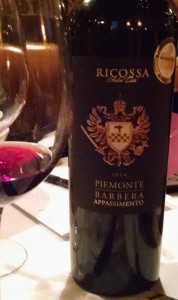 Although not nearly as ancient as ancient Greece, winemaking in Italy’s Piedmont region – home to the aforementioned Nebbiolo and hence, Barolo – dates back several centuries. Here, traditional winemaking has primarily centered on producing powerful, long-lived reds that take decades to reach their full potential. And, it seemed that such traditions were firmly entrenched.
Although not nearly as ancient as ancient Greece, winemaking in Italy’s Piedmont region – home to the aforementioned Nebbiolo and hence, Barolo – dates back several centuries. Here, traditional winemaking has primarily centered on producing powerful, long-lived reds that take decades to reach their full potential. And, it seemed that such traditions were firmly entrenched.
But, even here, things are shifting. For one, classic wine styles have been evolving since the 1980s as a decidedly different view of Barolo winemaking came to the fore, splitting producers into one of two camps — Traditionalist vs. Modernist.
More recently, in another blending of old and new, the region has co-opted the age-old tradition of drying grapes in service of a new, modern style of Barbera. The newly minted Barbera Appassimento DOC owes a debt of gratitude to Ricossa Winery, which was the brainchild behind the creation of this wine.
The company, part of the MGM Mondo del Vino group, felt that there was something missing from the Piedmontese winescape – wines made in the appasimento style – and specifically targeted the Barbera grape as the beneficiary of this process. And, after only a year of discussions with the Consorzio, this new wine was approved as of the 2014 vintage.
The appasimento style is most closely associated with Italy’s Veneto region – think Amarone della Valpolicella, but, essentially, these wines are produced from grapes that are dried in humidity-controlled, ventilated room, thereby reducing water content and concentrating aromas and flavors in the grape.
Moreover, the specific rules for the Barbera Appassimento DOC are vastly different than those of Amarone. Of note, the drying process for this new wine is limited to four to six weeks, a much shorter time frame than the four months required for Amarone production. Further, there is no wood aging permitted compared to the minimum two years of oak aging for Amarone.
Yet, despite the obvious comparison to the Veneto, the true intent was to express the Barbera grape in a alternate way rather than mimic Amarone, as evidenced by the resulting style of wine. The group was pleasantly surprised at how fresh and light the wine was, finding it to be a great expression of the grape with softer acidity and fuller body than more traditional Barbera wines. Lunch guests also tasted Ricossa’s Gavi as well as its Barbaresco 2011 and Barolo Riserva 2008, which provided a broader introduction to the winery’s portfolio.

